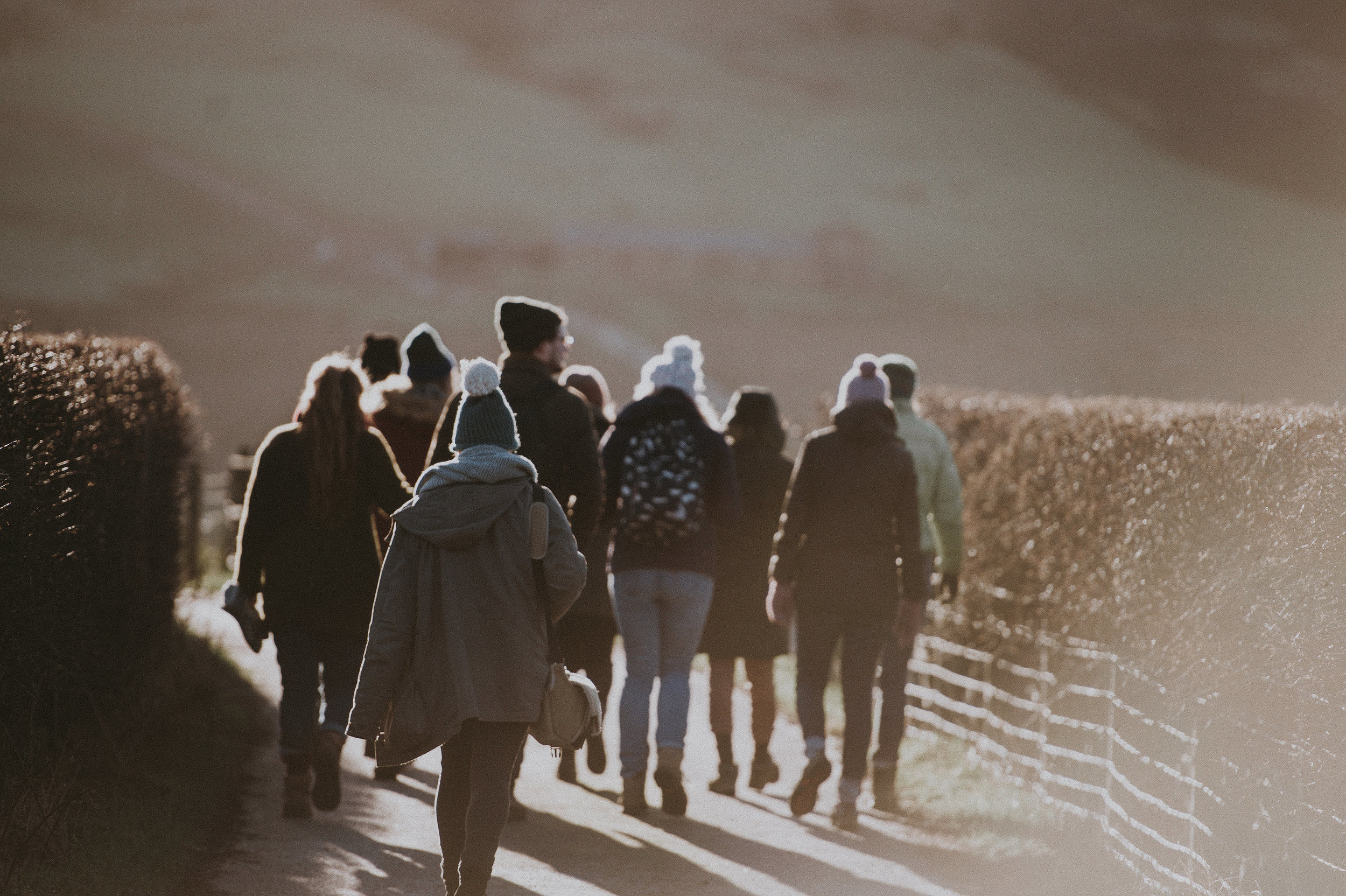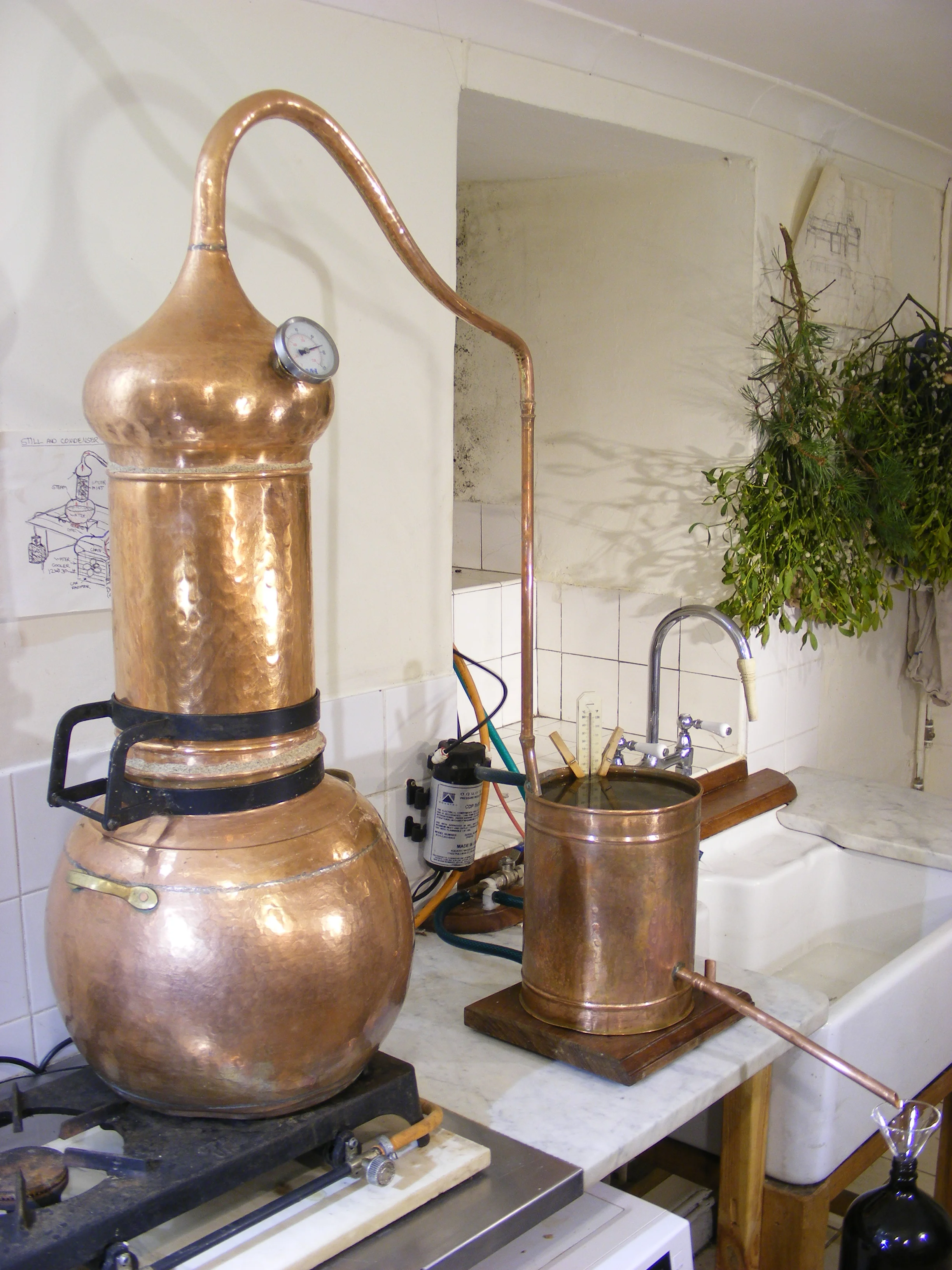All images courtesy of Annie Spratt.
It’s hard to believe how quickly the Autumn Gathering came around this year. At our community meet-up in October we all said how warm it still felt, but just a month later we could definitely feel the autumnal chill upon us.
Eleanor and I arrived early at the beautiful Cronkhill Farmhouse in Shropshire and couldn’t help but marvel at the space and the stunning views to be seen at each window.
Once we’d unpacked we were soon joined by the first arrivals for a seasonal cocktail of ginger, apple and a splash of gin. As the rooms slowly filled, we chose to gather on the cosy sofas and chatted as the daylight waned.
I took this time to give a short tutorial on how to insert the ‘Scraps Pockets’ everyone received in their goody bags which, as the name suggests, are pockets ready to be inserted into any garment, made from waste material from my cutting table. I had also brought along a few garments from House of Flint, which everyone was invited to try on and wear over the weekend if they wished.
Dinner was enjoyed beneath fairy lights, with a candlelit table and easy conversations carrying us into the night. Our first day ended with a calming tea ritual led by Eleanor.
As morning broke on the Saturday, Elizabeth led a meditation for those who wished to join. At the Summer Gathering the meditation she guided took me utterly away from myself, yet during this one I delved deep inside my mind without a necessarily conscious choice of doing so. It’s amazing the difference between the two, how she guided myself and others to places we may not have found otherwise.
After a warming breakfast of porridge and cinnamon stewed apples, Bex from Botanical Tales taught a workshop in which we created calendars full of intentions for the season. Each intention was written on a small piece of paper, rolled and tied to a branch with dried flowers and foliage. Each of us shall individually reveal a tiny scroll every week for the next three months. I’ve begun mine early and unrolled one in which I told myself to go for a winter picnic in the woods, which was such a lovely thing to do that I may not have made time for otherwise.
A hearty lunch and then outside we went, with Hanna from Ashleaf London leading the afternoon. She shared with us her love of leaves and made us all look a little bit closer at them as we gathered our favourites to use for the next stage of her workshop.
Within Ashleaf, Hanna is dedicated to preserving leaves in bronze, and we were lucky to be shown the first part of this process before trying it out for ourselves on our chosen leaf.
Following the day of creativity, those who wished took some time for themselves to read, write, take photographs or simply sit by the fire in quiet conversation. A special thanks to Mugdha, who tirelessly helped me to hang leaves from the ceiling for our autumnal feast that evening.
Three delicious courses ended with apple crumble before we slowly embraced the darkness and each light was put out until only a single candle remained. Eleanor led us into this dark with some words about the season and the darkness it brings. As she extinguished the final flame a shiver of something quite magical went up my spine.
The final day began and a few of us braved the cold and took a walk through the fields and lanes surrounding us. I tiptoed along a fallen tree and tried to avoid falling over before returning to a feast of bagels and plenty more cinnamon apples.
Our final activity was led by Chelsea, who took us on a foraging scavenger hunt and asked us to take note of what we found with each of our senses in turn. I noticed the smell of a holly leaf and the sound of a pinecone and felt truly present in the time spent exploring with each of my senses.
Lunch signified the end of our time here, and as each person took their leave I noticed new friendships formed and the meaningful connections that had been made over our few short days together.
I’ve often spoken of the importance of community and yet again I left this gathering feeling inspired and thankful to those wonderful people who joined us. I hope to see you all again - or if you were not able to attend, for the first time - soon!






































































